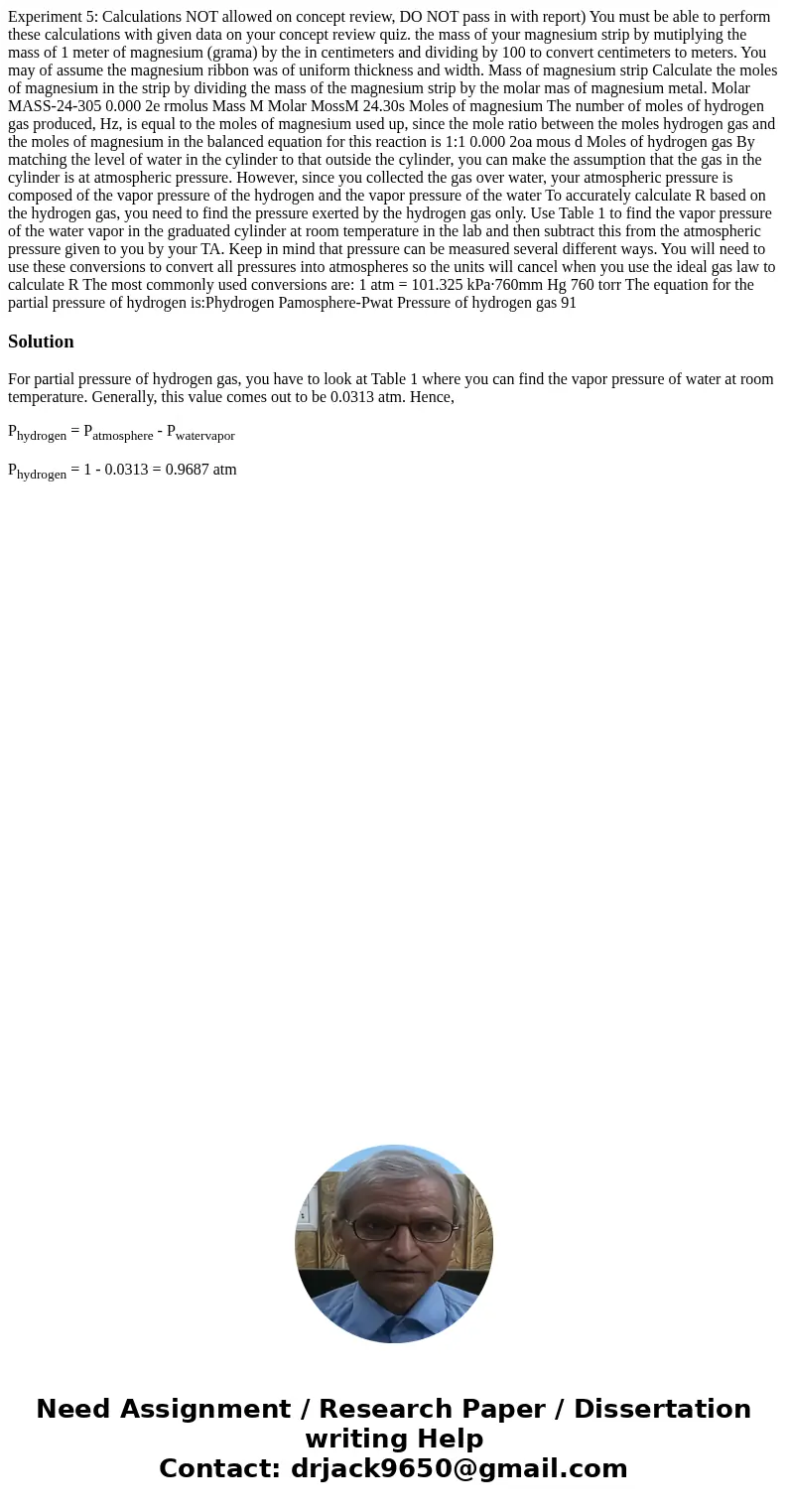Experiment 5 Calculations NOT allowed on concept review DO N
Experiment 5: Calculations NOT allowed on concept review, DO NOT pass in with report) You must be able to perform these calculations with given data on your concept review quiz. the mass of your magnesium strip by mutiplying the mass of 1 meter of magnesium (grama) by the in centimeters and dividing by 100 to convert centimeters to meters. You may of assume the magnesium ribbon was of uniform thickness and width. Mass of magnesium strip Calculate the moles of magnesium in the strip by dividing the mass of the magnesium strip by the molar mas of magnesium metal. Molar MASS-24-305 0.000 2e rmolus Mass M Molar MossM 24.30s Moles of magnesium The number of moles of hydrogen gas produced, Hz, is equal to the moles of magnesium used up, since the mole ratio between the moles hydrogen gas and the moles of magnesium in the balanced equation for this reaction is 1:1 0.000 2oa mous d Moles of hydrogen gas By matching the level of water in the cylinder to that outside the cylinder, you can make the assumption that the gas in the cylinder is at atmospheric pressure. However, since you collected the gas over water, your atmospheric pressure is composed of the vapor pressure of the hydrogen and the vapor pressure of the water To accurately calculate R based on the hydrogen gas, you need to find the pressure exerted by the hydrogen gas only. Use Table 1 to find the vapor pressure of the water vapor in the graduated cylinder at room temperature in the lab and then subtract this from the atmospheric pressure given to you by your TA. Keep in mind that pressure can be measured several different ways. You will need to use these conversions to convert all pressures into atmospheres so the units will cancel when you use the ideal gas law to calculate R The most commonly used conversions are: 1 atm = 101.325 kPa·760mm Hg 760 torr The equation for the partial pressure of hydrogen is:Phydrogen Pamosphere-Pwat Pressure of hydrogen gas 91 
Solution
For partial pressure of hydrogen gas, you have to look at Table 1 where you can find the vapor pressure of water at room temperature. Generally, this value comes out to be 0.0313 atm. Hence,
Phydrogen = Patmosphere - Pwatervapor
Phydrogen = 1 - 0.0313 = 0.9687 atm

 Homework Sourse
Homework Sourse